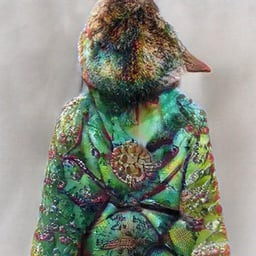There was extensive trade between Scandinavia and the Mediterranean, and some of the vikings are believed to have been Muslims from the Middle East and North Africa (“viking” meant armed seafarer, and was a profession and not an ethnicity). Meanwhile, Norse and Icelandic mercenaries worked as the Byzantine empire’s Varangian Guards (they were favoured for their courage, and equally importantly, lack of connection to domestic political intrigues).
The documentary The 13th Warrior confirms Muslims were definitely part of the Vikings.
And had a Spanish accent. They would say “Thore, the god del Thundero”, for example, even though they would write it in plain runes.
The Varangian guard turned out to be, in general, much… healthier for emperors than the former Praetorian guard.
Aha smartass! Everyone knows free trade didn’t exist until 1985, so how could that be true?
On a more serious note, the Sea Peoples reached Egypt and Ramses III said they devastated neighboring civs. Could have included Norse.
I think the sword in the middle belonged to a guy named HORSESHIT.
Close. It actually says NORSESHIT.
Of course the Vikings were famously land locked and never explored the fine art of smithing…
Ok, as someone who was genuinely interested in Scandinavian history during the Viking Age, this one pisses me off more than it should, we know the vikings at BARE MINIMUM LEVEL OF CONTACT traded with people who traded with the Arabs, we know this because several viking hoards have been discovered with Arab coins.
Additionally, the Viking era came about because the vikings had (generally) better boats than other countries at the time, and those boats could traverse both river and sea, allowing them to trade over great distance.
There’s a ton of other stuff I wont go into about the steel (which, by the way, was not damascus, nobody who spent any time learning about it would claim so), the broad terminology of “vikings”, and the Ulfbert sword, maybe I’ll come back some day and type it out, but I just don’t have the time or energy to write an essay right now
No no, they’re right. The Vikings walked to Newfoundland.
They left graffiti in the Hagia Sophia
I guess geography of large rivers is not a strong point for this person…
They didn’t watch the show Vikings. I thought it was quite popular.
This person was probably watching Ancient Aliens or some other garbage “History” channel program.
It’s going to blow their minds when they learn about the Volga trade route or the Varangian Guard or the Viking raids on Muslim Spain or…
Ignoring the dumbass post, are the handles like that because they would have been wrapped in something organic that has worn away over time or did they really use super thin handles (sorry I don’t know the proper term)?
The part your talking about is called the ‘tang’, and would have had a, probably wooden, handle around it. That handle would probably be wrapped in leather or similar to give a better grip. The larger bit at the end is the ‘pommel’ which can help stop the sword slipping out of your hand, protects the end of the handle and can also act as a counterweight to help balance the blade.
The handle would have a a wooden grip likely with some type of cloth or leather wrapped around it.




